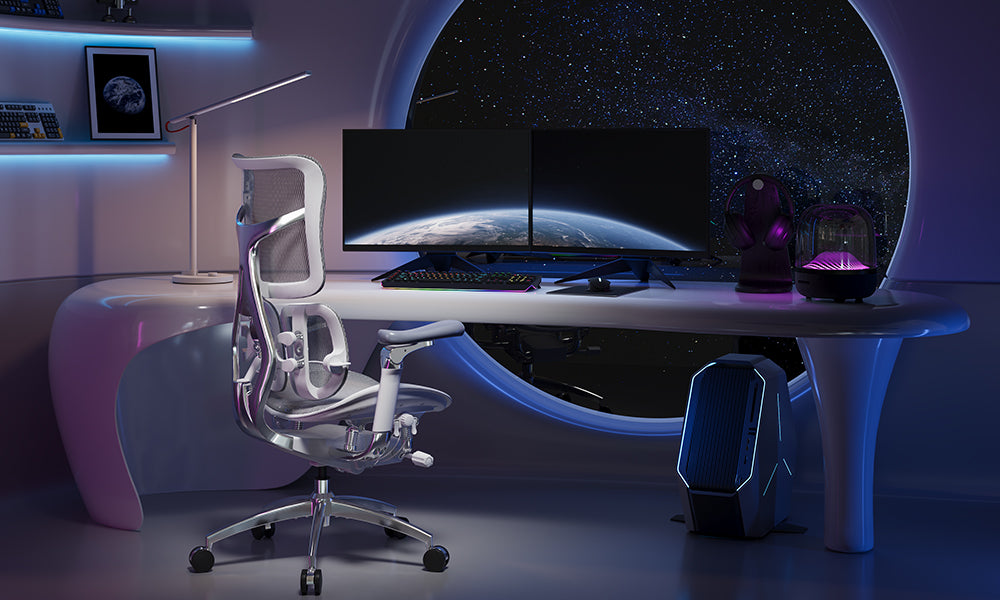One of the most transformative pieces of equipment to help you achieve this is a height-adjustable standing desk. It offers a dynamic approach to working by allowing you to alternate between sitting and standing throughout the day. This can help reduce the risks associated with prolonged sitting, improve posture, and boost overall energy. However, simply owning a standing desk isn’t enough—you need to know how to set it up effectively to reap all of its benefits.
In this guide, we’ll explore the key elements to setting up your height-adjustable standing desk, creating a workspace that promotes comfort, productivity, and well-being.
Start with the Right Desk and Accessories
The first step in setting up your workspace is to choose the right standing desk that fits your needs. Whether you go for a manual crank desk or an electric version, ensure the desk has a wide range of height adjustments. Consider options like the Sihoo D03 Standing Desk, known for its smooth transition between sitting and standing positions, wobble-free structure, and whisper-quiet motor.
Aside from the desk, invest in ergonomic accessories such as:
- An anti-fatigue mat for standing comfort.
- Monitor arms to ensure proper screen height.
- A cable management system to keep your workspace tidy.
Adjust the Desk Height Properly
Finding the correct height for your standing desk is crucial for maintaining proper ergonomics. The ideal desk height will allow your arms to rest comfortably at a 90-degree angle when typing. If the desk is too high or too low, it can lead to strain on your shoulders and wrists, making standing uncomfortable over time.
Here’s how to determine the right height:
- For sitting: When seated, your elbows should be at a 90-degree angle, with your wrists aligned straight with your forearms while typing. Your feet should be flat on the floor, and your knees bent at about a 90-degree angle.
- For standing: When standing, keep your elbows at the same 90-degree angle, with your shoulders relaxed. The monitor should be positioned so the top of the screen is at or slightly below eye level, reducing neck strain.
Organize Your Desk Layout
Once your desk is at the right height, it’s time to organize your workspace for optimal productivity and comfort. Keep frequently used items within arm’s reach to avoid unnecessary movements. Here’s how to do it:
- Monitors: Use a monitor stand or adjustable arm to elevate your screen. Your eyes should naturally land about 2-3 inches below the top edge of the monitor when sitting or standing.
- Keyboard and Mouse: Place your keyboard and mouse at a distance that allows you to keep your elbows close to your body and your wrists in a neutral position.
- Storage: Consider a drawer or shelving system to keep your workspace clutter-free. Too many items on your desk can be distracting and lead to disorganization.
Incorporate Movement into Your Routine
One of the main benefits of a standing desk is the ability to alternate between sitting and standing. However, it’s essential to strike a balance. Standing all day can be just as harmful as sitting all day, so make sure to alternate positions regularly.
Follow the sit-stand movement rule:
- 30 minutes sitting, 20 minutes standing, 10 minutes of movement: This rule encourages you to change positions frequently and incorporate walking or stretching into your routine. Set reminders to adjust your desk height every 45 minutes to an hour to prevent prolonged periods in one position.
Optimize Lighting and Monitor Placement
Lighting plays an essential role in how comfortable you feel at your desk. Poor lighting can lead to eye strain, headaches, and a reduction in productivity. Here's how to optimize lighting for your workspace:
- Natural light: If possible, position your desk near a window to benefit from natural light. Avoid placing your screen directly in front of or behind the window to prevent glare.
- Task lighting: Use adjustable desk lamps to supplement ambient lighting in your workspace. This is especially helpful for focused tasks like reading or writing.
Monitor placement is also crucial. A common mistake people make when setting up their standing desk is failing to adjust their monitors properly. Your monitor should be positioned so your eyes are level with the top third of the screen, which prevents you from craning your neck.
Invest in a Comfortable Chair for Sitting
When using a height-adjustable standing desk, you will still spend some time sitting. It’s essential to have a comfortable, ergonomic chair that supports proper posture. The Sihoo Doro Series, with its advanced lumbar support and adjustable features, provides an excellent seating option when you need to sit.
Ensure that when seated, your back is fully supported by the chair’s lumbar support, your feet are flat on the floor, and your knees are at a 90-degree angle.
Don’t Forget Cable Management
A cluttered workspace can lead to distractions and frustration. Use cable management solutions to keep your desk free of tangled wires. Some standing desks, like the Sihoo D03, come with built-in cable trays or clips to keep everything tidy. Velcro straps, adhesive hooks, and cable sleeves are also useful tools for managing cables effectively.
Make Adjustments Based on Comfort
Remember, every individual is different, and the ideal standing desk setup may vary. As you use your standing desk, pay attention to how your body feels. If you experience discomfort, make adjustments. Your workspace should be adaptable and comfortable, helping you to work without strain.
Conclusion
Setting up your workspace with a height adjustable standing desk is a game-changer when it comes to both productivity and health. By adjusting the desk height properly, organizing your desk layout, incorporating movement, and optimizing ergonomics, you’ll create a space that supports both your work goals and your well-being.



































